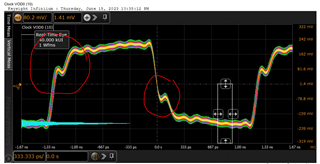Hi TI
As you know , we can't test the SOC die side wavefrom but can only test the CSI nearest test point nearby SOC.
We found the waveform of CSI has non-monotonicity rising edge at nearby SOC side test point, whether this is ok from TI view?

What's more CSI lane compliance test is pass, report also attached.
BR Jingcheng

